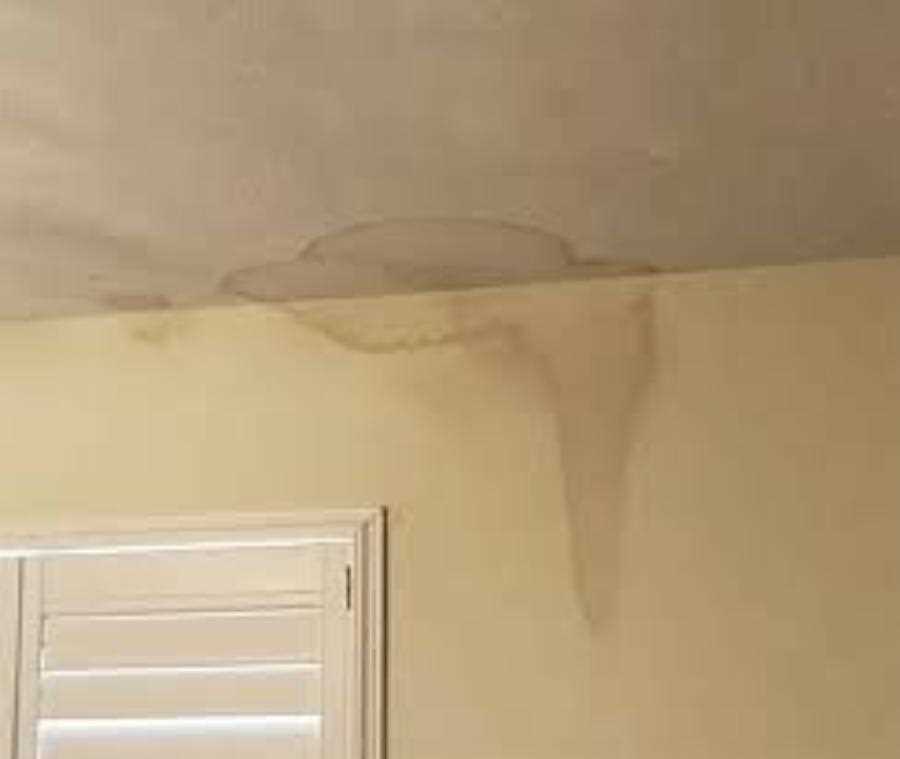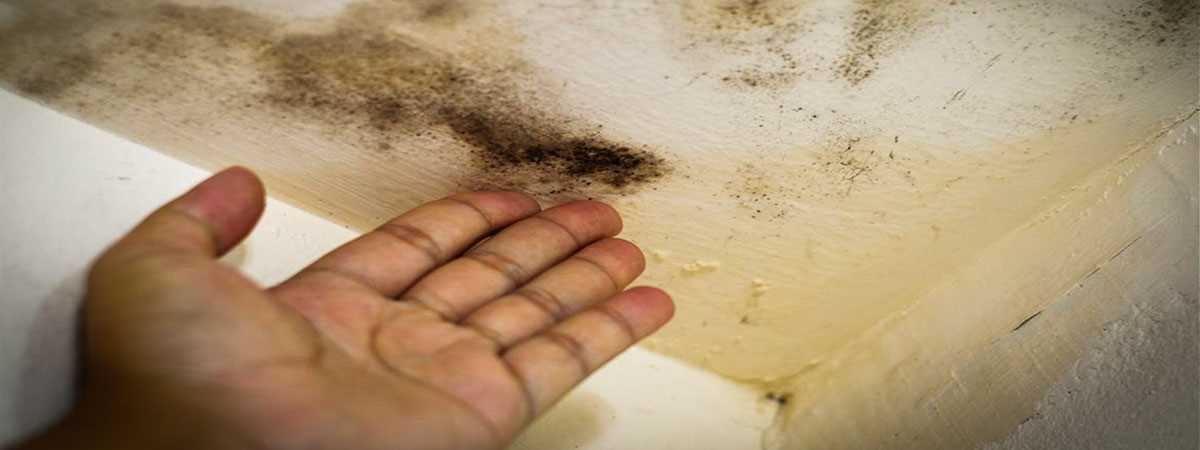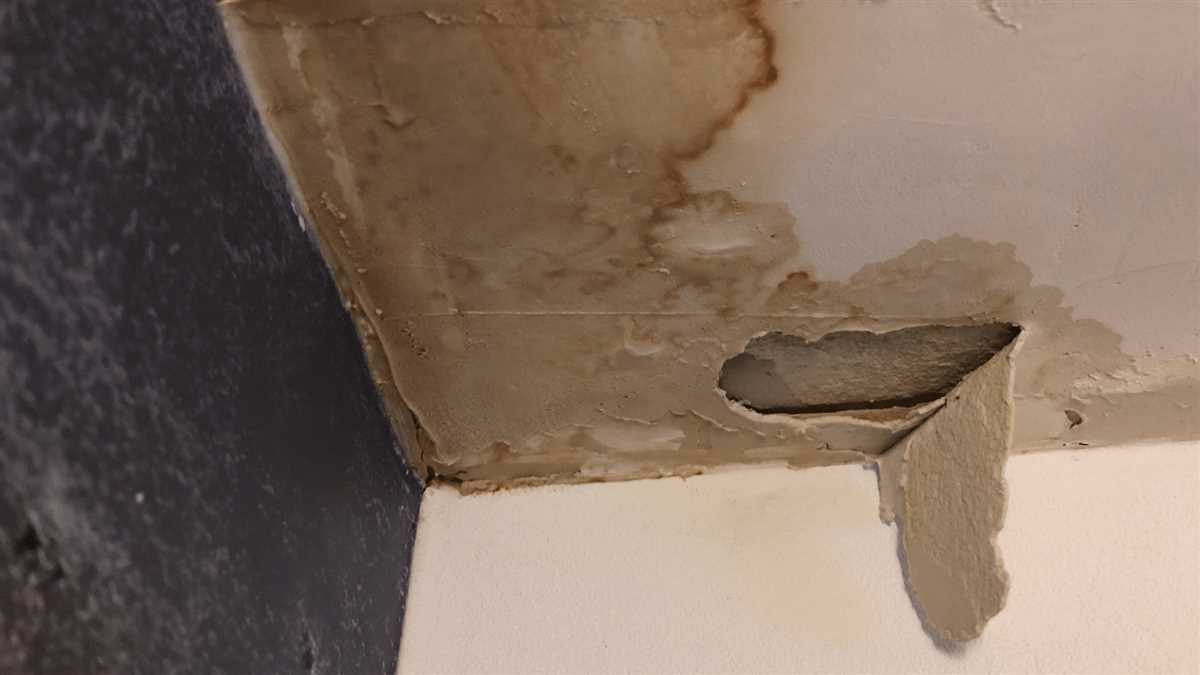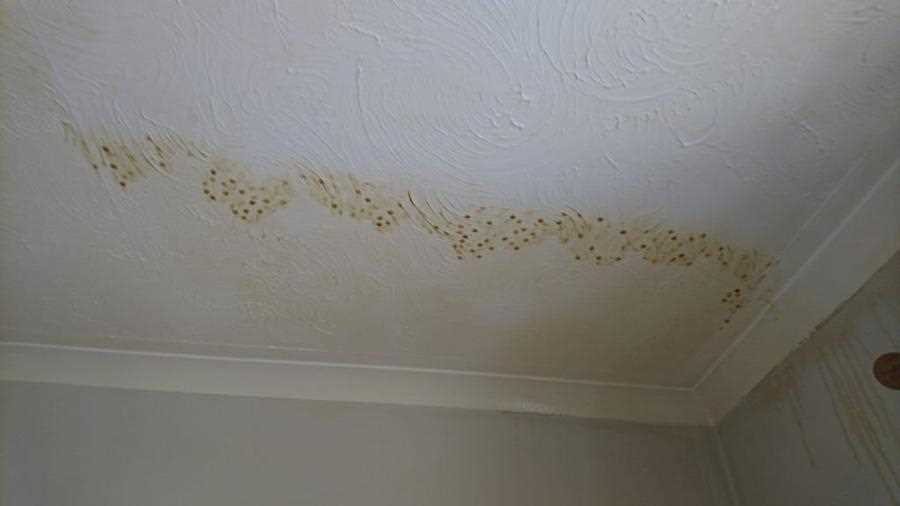




Having brown stains on your ceiling can be an unsightly and frustrating problem. Not only do these stains ruin the aesthetic appeal of your home, but they can also indicate a more serious issue that needs to be addressed. In this article, we will explore the common causes of brown ceiling stains and provide solutions for preventing and treating them.
One of the main causes of brown ceiling stains is water damage. Leaks from the roof, plumbing pipes, or bathroom fixtures can result in water seeping into the ceiling, which leads to the development of stains. It is important to identify and fix the source of the leak to prevent further damage. Additionally, prolonged exposure to moisture can promote the growth of mold and mildew, which can further exacerbate the problem.
Another possible cause of brown ceiling stains is condensation. When warm, moist air comes into contact with a cool ceiling surface, it can create condensation, which can eventually lead to stains. This can be especially common in bathrooms and kitchens where steam from showers and cooking can accumulate. Proper ventilation and insulation can help prevent condensation and reduce the likelihood of staining.
To treat brown ceiling stains, it is essential to first address the underlying cause. If the stains are a result of water damage, fixing the leak and allowing the affected area to dry thoroughly is crucial. Once the area is dry, you can apply a stain-blocking primer to prevent the stain from bleeding through the new paint. If the stains are due to condensation, improving ventilation and insulation in the affected area can help prevent future staining.
In conclusion, brown ceiling stains can be caused by water damage and condensation. It is important to identify and fix the source of the problem to prevent further damage and staining. By taking preventive measures, such as improving ventilation and insulation, you can reduce the likelihood of brown stains on your ceiling. In case of staining, treating the underlying cause and using a stain-blocking primer can help restore the appearance of your ceiling.
Brown Ceiling Stains
Brown ceiling stains can be a frustrating and unsightly problem in any home. These stains are commonly caused by water leaks or excessive moisture in the ceiling, which can lead to mold and mildew growth. If left untreated, these stains can become more pronounced and even cause structural damage to your ceiling.
Causes of Brown Ceiling Stains
- Water Leaks: One of the primary causes of brown ceiling stains is water leaks. These leaks can originate from plumbing pipes, roof leaks, or even condensation from the HVAC system.
- Excessive Moisture: High humidity levels in the home can also contribute to brown ceiling stains. Poor ventilation in bathrooms, kitchens, or laundry rooms can allow moisture to accumulate and cause stains over time.
- Mold and Mildew Growth: When moisture is present, mold and mildew can easily start to grow on your ceiling. This can result in brown stains and also pose health risks for you and your family.
Preventing Brown Ceiling Stains
- Fix Water Leaks Promptly: If you notice any signs of water leaks, such as dripping or water stains, it is crucial to fix them as soon as possible. This will help prevent further damage to your ceiling and avoid the growth of mold and mildew.
- Improve Ventilation: Proper ventilation is essential to reduce excess moisture in your home. Make sure to use exhaust fans in bathrooms, kitchens, and laundry rooms to remove humid air. Additionally, you can open windows or use dehumidifiers to maintain a healthy humidity level.
- Maintain Your Roof: Regularly inspect and maintain your roof to prevent any water leaks. Replace any missing or damaged shingles and ensure that the flashing is in good condition.
Treating Brown Ceiling Stains
When it comes to treating brown ceiling stains, it is essential to address the underlying cause of the problem. Here are a few steps you can take:
- Identify the Source: First, you need to determine what is causing the brown stains on your ceiling. This could be a leaky pipe, a roof leak, or excessive humidity in the home.
- Repair the Cause: Once you have identified the source of the problem, take the necessary steps to fix it. This might involve hiring a professional plumber, roofer, or improving the ventilation in your home.
- Clean the Stains: After addressing the underlying problem, you can clean the brown stains on your ceiling. Use a mixture of warm water and mild detergent to gently scrub the stained area. Rinse with clean water and pat dry.
- Paint the Ceiling: If the stains persist after cleaning, you may need to repaint your ceiling. Choose a high-quality stain-blocking primer and paint that is resistant to moisture and mold growth.
By following these preventive measures and taking appropriate treatment steps, you can effectively prevent and treat brown ceiling stains. Remember, if the problem persists or the stains reoccur, it is best to consult with a professional to determine the underlying cause and find a suitable solution.
Understanding Causes and Solutions
Ceiling stains can be a frustrating and unsightly problem to deal with. Understanding the causes of these stains is important in order to prevent them and find the appropriate solutions.
Causes
There are several factors that can contribute to the formation of brown stains on your ceiling:
- Water Damage: One of the most common causes of ceiling stains is water damage. This can occur due to leaks from plumbing, roof problems, or even excessive condensation.
- Mold and Mildew: Moisture can create the perfect environment for mold and mildew to grow on your ceiling. This can lead to discoloration and the formation of brown stains.
- Smoke and Soot: If you have a fireplace or regularly use candles, smoke and soot can accumulate on your ceiling over time, resulting in discolored stains.
Solutions
Once you have identified the cause of the brown stains on your ceiling, you can take appropriate action to remedy the situation:
- Fix any leaks: If water damage is the culprit, it is important to locate and fix any leaks. This may involve repairing plumbing issues or addressing problems with your roof.
- Clean and remove mold or mildew: If you notice mold or mildew growth, it is essential to clean and remove it promptly. Use a mixture of water and bleach to scrub away the stains, and ensure proper ventilation to prevent future growth.
- Remove smoke and soot: If smoke and soot are causing the brown stains, you will need to clean the affected areas. Use a solution of warm water and mild detergent to gently scrub away the stains. It may also be necessary to repaint the ceiling for a more thorough solution.
Prevention

Preventing brown stains on your ceiling is key to avoiding future problems. Here are some preventive measures you can take:
- Maintain good ventilation: Proper airflow can help prevent the buildup of moisture and reduce the possibility of mold and mildew growth.
- Regularly inspect your roof: Check your roof for any signs of damage or leaks. Repair any issues promptly to prevent water from seeping into your ceiling.
- Use exhaust fans: When cooking or showering, use exhaust fans to help remove excess moisture from the air.
- Avoid smoking indoors: Smoke and soot can easily accumulate on your ceiling, so it’s best to avoid smoking indoors altogether.
By understanding the causes of brown stains on your ceiling and implementing these solutions and preventive measures, you can keep your ceiling looking clean and stain-free.
Identifying the Factors Behind Brown Stains
Brown stains on your ceiling can be unsightly and may indicate underlying issues. It is important to identify the factors that can cause these stains so that you can address the root cause and prevent further damage. Here are some common factors that can lead to brown stains on your ceiling:
- Water leaks: One of the most common causes of brown stains on the ceiling is a water leak. This can be from a leaking roof, plumbing issue, or condensation buildup. Water can seep through the ceiling and leave behind brown stains as it dries.
- Mold and mildew: Excessive moisture in your home can lead to the growth of mold and mildew, which can cause brown stains on the ceiling. These stains may appear fuzzy or have a musty smell.
- Smoke and soot: If you have a fireplace or regularly burn candles, smoke and soot can accumulate on your ceiling and cause brown stains. This is especially common near the ceiling vents or areas with poor ventilation.
- Oil and grease: If you have a kitchen directly above the stained ceiling, oil and grease from cooking can accumulate and cause brown stains. This is more common in houses with poor ventilation or range hoods that are not properly installed.
Identifying the specific cause of the brown stains on your ceiling can help you determine the best course of action to remove the stains and prevent them from returning. It may be necessary to consult with a professional to assess the extent of the damage and provide appropriate solutions.
Preventing Brown Stains on Your Ceiling
1. Identify and address the source of moisture

In order to prevent brown stains on your ceiling, it is important to identify and address the source of moisture that may be causing the staining. Common sources of moisture include roof leaks, plumbing leaks, condensation, and high humidity levels.
2. Regularly check your roof for leaks
One of the main culprits for brown stains on ceilings is a leaky roof. Regularly check your roof for any signs of wear and tear, damaged shingles, or other vulnerabilities that could allow water to seep through. Address any issues promptly to prevent further damage and staining.
3. Repair any plumbing leaks
Leaking pipes or fixtures can also contribute to ceiling stains. Inspect your plumbing system regularly and repair any leaks as soon as they are detected. This will help prevent water from dampening the ceiling and causing stains.
4. Improve ventilation and reduce humidity

Poor ventilation and high humidity levels can lead to condensation, which can cause brown stains on your ceiling. To prevent this, make sure your home is properly ventilated and consider using dehumidifiers in areas with high humidity, such as bathrooms and kitchens.
5. Regularly clean and maintain your ceiling
Regularly cleaning and maintaining your ceiling can help prevent the buildup of dirt, dust, and other substances that can cause staining. Use a mild detergent and a soft cloth or sponge to gently clean your ceiling, and avoid abrasive cleaning tools or harsh chemicals that could damage the surface.
6. Use a moisture-resistant paint
If you have experienced brown stains on your ceiling in the past, consider using a moisture-resistant paint for your ceiling. These paints are designed to resist moisture and can help prevent future stains from forming.
7. Monitor your ceiling for any signs of staining
Regularly inspect your ceiling for any signs of brown stains or discoloration. Early detection can help you address the issue before it worsens and prevent further damage to your ceiling.
8. Seek professional help if needed
If you are unsure of the source of the brown stains on your ceiling or if the problem persists despite your efforts to prevent it, it may be necessary to seek professional help. A qualified contractor or water damage restoration specialist can inspect your ceiling and help identify and address the underlying cause of the staining.
Treating Brown Stains on Your Ceiling
If you notice brown stains on your ceiling, it is important to address them as soon as possible to prevent further damage and potential health hazards. Here are some steps you can take to treat brown stains on your ceiling:
Identify the cause
The first step in treating brown stains on your ceiling is to identify the cause of the stains. Common causes of brown stains on ceilings include water leaks, roof damage, condensation, mold or mildew growth, and smoke residue. Once you have determined the cause of the stains, you can take appropriate steps to address it.
Repair any water leaks or roof damage
If the brown stains are due to water leaks or roof damage, it is important to repair them as soon as possible. Fixing the source of the problem will prevent further staining and potential structural damage. Depending on the extent of the damage, you may need to hire a professional contractor to repair the leaks or roof.
Clean the stains
Once the source of the brown stains has been fixed, you can proceed to clean the stains. Start by protecting the surrounding area with plastic sheets or drop cloths to prevent any further damage or mess. Mix a solution of mild detergent and warm water and gently apply it to the stained area using a sponge or cloth. Avoid scrubbing too hard, as it could damage the ceiling. Rinse the area with clean water and allow it to dry completely.
Prevent future stains
To prevent future brown stains on your ceiling, it is important to address any excessive moisture or humidity issues in your home. Make sure that your roof is in good condition and inspect it regularly for any signs of damage. Check your plumbing for any leaks and fix them promptly. Use exhaust fans or dehumidifiers in areas prone to moisture, such as bathrooms and kitchens. Regularly clean and maintain your gutters to prevent water from overflowing and causing damage to your roof.
Consider repainting

If the brown stains are persistent and cannot be completely removed, you may need to consider repainting your ceiling. Choose a high-quality stain-blocking primer and apply it to the stained area before applying a fresh coat of paint. This will help prevent any remaining stains from bleeding through the paint and provide a uniform finish.
By following these steps, you can effectively treat brown stains on your ceiling and maintain a clean and healthy living environment.
Effective Solutions for Long-Term Results
1. Identify and address underlying causes

In order to effectively prevent and treat brown stains on your ceiling, it is important to first identify and address the underlying causes. Some common causes of brown stains on ceilings include:
- Water leaks or roof damage
- High humidity levels
- Poor ventilation
- Condensation
If you notice brown stains on your ceiling, it is important to investigate and resolve any of these underlying issues before attempting to treat the stains themselves.
2. Repair any damage
If water leaks or roof damage are the culprit behind the brown stains on your ceiling, it is crucial to repair the damage as soon as possible. This may involve fixing a leaking pipe, replacing damaged roof tiles, or sealing any gaps or cracks that may be allowing water to enter your home. By addressing the source of the problem, you can prevent further stains from appearing.
3. Improve ventilation and reduce humidity

Poor ventilation and high humidity levels can contribute to the formation of brown stains on your ceiling. To prevent this, consider taking the following steps:
- Install extractor fans in bathrooms and kitchens to remove excess moisture
- Open windows regularly to allow fresh air to circulate and reduce humidity
- Use a dehumidifier if necessary
- Ensure that your home is properly insulated to prevent condensation
By improving ventilation and reducing humidity levels, you can create an environment that is less prone to the formation of brown stains on your ceiling.
4. Apply a stain-blocking primer
If you have treated the underlying causes of the brown stains and the stains are still visible, you can apply a stain-blocking primer to your ceiling before repainting. This primer helps to seal in the stain and prevent it from bleeding through the new paint. Make sure to choose a primer specifically designed for use on ceilings and follow the manufacturer’s instructions for application.
5. Repaint your ceiling

After applying a stain-blocking primer, you can repaint your ceiling to give it a fresh and clean appearance. Choose a high-quality paint that is specifically formulated for use on ceilings and apply it according to the manufacturer’s instructions. This will not only cover up any remaining brown stains, but also protect your ceiling from future staining.
Conclusion

By identifying and addressing the underlying causes, repairing any damage, improving ventilation and reducing humidity levels, and applying a stain-blocking primer followed by a fresh coat of paint, you can effectively prevent and treat brown stains on your ceiling. These solutions, when implemented together, will provide long-term results and help maintain a clean and stain-free ceiling.
FAQ
What causes brown stains on my ceiling?
Brown stains on your ceiling can be caused by a few different factors. One common cause is water damage, which can occur from a leaky roof, plumbing issues, or condensation buildup. Another possible cause is smoke or soot from a fireplace or candles. Mold or mildew growth can also lead to brown stains on the ceiling.
How can I prevent brown stains on my ceiling?
To prevent brown stains on your ceiling, it’s important to address any potential causes. Regularly inspect your roof for leaks and have them repaired promptly. Use exhaust fans in bathrooms and kitchens to reduce condensation buildup. Avoid smoking indoors and make sure your fireplace is properly vented. Keep your home well-ventilated to prevent mold and mildew growth.
What should I do if I have brown stains on my ceiling?
If you have brown stains on your ceiling, it’s important to determine the cause before taking action. If the stains are due to water damage, you’ll need to locate and fix the source of the water. In the case of smoke or soot stains, you may need to clean the area or hire a professional cleaner. If mold or mildew is the cause, you’ll need to address the underlying moisture issue and clean the affected area with a mold-killing solution.
Can I paint over brown stains on my ceiling?
In some cases, you may be able to paint over brown stains on your ceiling. However, it’s important to address the underlying cause of the stains first. If the stains are due to water damage or mold growth, simply painting over them will not solve the problem. If the stains are minor and not caused by a serious issue, you can try using a stain-blocking primer before painting.














